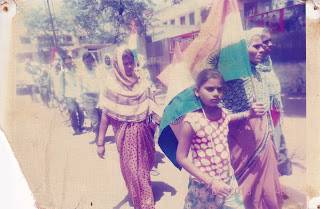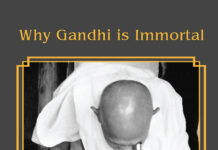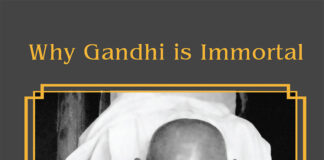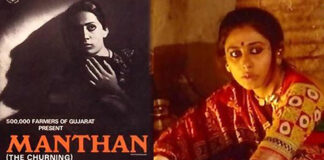
Then I actually met released bonded labourers and heard their stories – Keshav Nankar, Bhivada, Jairam Walvi, Taibai, Ashabai, Leelubai, Vimalbai. They were all Adivasis – Warlis, Katkaris, Kolis – from Vasai, Bhiwandi, Wada, Shahpur talukas. I learned about the veth-bigari system prevalent in those rural areas which crushed human lives. Even the word veth-bigari was new to me. The bigger, richer landlords employed Adivasis on their fields and in their homes and made them work over generations either for free or for a pittance. Adivasis worked on the brick kilns of the landlords from their childhood to old age sometimes dying in those kilns. The landlords gave ‘advances’ which were never cancelled no matter how long and how hard the Adivasis worked.
I heard with horror the story of the first flag hoisting by bonded labourers in Dahisar. In the early years of Shramajeevi Sanghatana, in the early 1980s, when the first bonded labourers had stood up against the exploitation of the landlords, the organisation decided that the Adivasis would salute the national flag. Till that day the Adivasis had never saluted the national flag, they had never gone to school and no one taught them the national anthem. Yes, this was thirty years after independence. When the Adivasis went near the flag the landlords opposed them. They were not allowed to salute the flag. They had to literally fight to go near the flag. There were police cases. When I heard this story I thought how easy it was some to be free, and how difficult for others! It is the same country but people are not the same. Shramajeevi Sanghatana taught me about importance of the tricoulour as the symbol of the basic promise of Independence – the right to be considered a free and equal citizen, equal in rights and dignity.
After Shramajeevi Sanghatana, I came to Chandrapur in 1999 and I found the situation here substantively different from Thane. There was poverty and exploitation in the rural areas – but I did not see the kind of brutal violence that I had seemed rather rampant in Thane. Also, I found a living memory of the freedom struggle and freedom leaders in Chandrapur. In Mul people told me about the Charkha Sangh which Gandhiji had initiated. They said with pride that Dr. Babasaheb Ambedkar had stopped at Mul rest house on his way to Chandrapur. In Saoli there were stories about how Gandhiji had spent a fortnight there teaching people about the importance of Khadi and spinning. In Chimur there is memorial of the Chimur Kranti of 1942 when villagers had taken on the might of the British empire. There is also the memory of Veer Baburao Shedmake who fought seven battles against the British in 1857, was betrayed by his sister and subsequently hanged by the British. All across Chandrapur district people tell stories of Rashtrasant Tukdoji Maharaj – how his bhajans filled people with nationalist pride and guided people in action. In village after village people told me, ‘Maharaj ithe ale hote, ithe thamle hote, ithe karyakram ghetle – Maharaj had come here, stayed here, conducted programmes here.’
In Chandrapur I saw the spontaneous love for the tricolour. One year, in 2002, Shramik Elgar organised a Shaheed Smruti Abhiyan to pay respect to freedom fighters. We decorated vehicles with large portraits of freedom fighters and a group of us went from village to village on cycles between 9th August and 15th August, singing freedom songs and making speeches about the freedom struggle and how freedom should bring happiness to everybody and not just a handful of people and how Shramik Elgar wanted to work for the rights of the rural people in Chandrapur district. August is a busy month for paddy farmers, and as our cycles went by the farmers and women would stop us to pay their respects to the portraits. A few of them stopped work and joined us for the trip.
We went to more than fifty villages in six blocks of Chandrapur and Gadchiroli districts and people welcomed the rally everywhere with great enthusiasm. Youths and children played drums and danced. I remember that in one village, after the speeches, the youths wanted to know the exact time when Aruna Asaf Ali had unfurled the flag at Gowalia Tank Maidan during the Quit India movement in 1942. “We want to hoist the flag on 15th August at that very exact time to remember her,” they said. Unfortunately, my knowledge of history was limited and I couldn’t answer their curiosity.
I also remember Bhagat Singh – not the famous revolutionary, but the leader of a group of migrant labourers from Chhattisgarh who used to work in the stone quarries of Chiroli village in Mul taluka, Chandrapur. I first came in contact with Bhagat Singh when we were fighting for drinking water to be provided to the labourers in the quarries. Every year Bhagat bhaiyya would invite us to their huts at the quarry site on 15th August – the only day when they would not be breaking stones – and every single hut would be decorated with tricolour flags. We would have hen dinner together and then the women sang Chhattisgarhi songs, mostly bhajans, late into the night. There were no lights at the quarries and we sat around lamps listening.
In the twenty two years that I spent with Shramik Elgar, working in Chandrapur and Gadchiroli, the tricolour was always with us – in struggle and in celebrations. In every struggle – whether for education or minimum wages or land rights or forest rights or liquor prohibition – there was always the tricolour and portraits of freedom fighters.
 The Second General Body Meeting on 15th August 2002
The Second General Body Meeting on 15th August 2002
The general body meetings of Shramik Elgar used to be organised on Independence Day. This was before the government ordered Gram Sabhas to be organised in every village on 15th August.
This year there is a call given by the Prime Minister to fly the tricolour in every house – har ghar tiranga. The call reminded me of an incident not very long ago. It was the hot month of May when the forest department decided to evict a village called Bagulwahi in Rajura taluka, Chandrapur. This was a small hamlet of landless Adivasis who had put up some huts on land which turned out to belong to the forest department and were working as daily wage labourers. The forest department entered the village without any forewarning and threatened the villagers with dire consequences. The officers forced the villagers to dismantle their own huts with their own hands and carried off the materials, shown as ‘recovery’ in the offence. The villagers – men, women, babies – spent the night in the open. There was no water, there was no food. Shramik Elgar reached the village the next day and saw the disastrous situation in which the forest department had left the people. There was not a single hut left – every bamboo, tile and tin sheet had been confiscated.
The homeless people of Bagulwahi
That day the people of Bagulwahi walked 60 kms to the district headquarters and camped for days outside the office of the Chief Conservator of Forest till the matter was resolved, till they could go back to Bagulwahi and their materials were returned. Those who had no ghar left that day carried the tiranga on their shoulder. And no one had asked them to do so.
– Paromita Goswami













